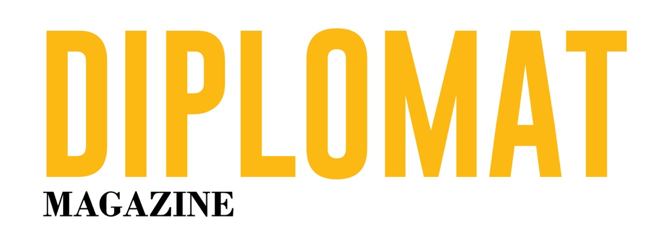By Isa Jeziah Dookie
“CHEATING,” is how President Donald Trump described China’s self-designation as a developing country in the World Trade Organization (WTO). One might be forgiven for dismissing President Trump’s tweet as just another bombastic Trumpism were it not for the fact that the subsequent U.S. administration and the U.S. Congress made it clear this, albeit in more diplomatic but no less strong words, was U.S. policy. Under the Biden administration, the (unpretentiously named) “PRC Is Not a Developing Country Act” cleared the House in a 415-0 vote and was approved by a Senate committee, though it has not yet been enacted into law. The U.S. remains firm in its stance that China should not receive developing-country treatment at the WTO.
China, for its part, labelled President Trump’s cheating allegation as the absurd trickery of a global hegemon and has staunchly defended its position before the WTO, maintaining that it is merely the world’s largest developing economy. However, in September 2025, China announced that while it continues to regard itself as a developing country, it will no longer seek Special and Differential Treatment (SDT) in current and future WTO negotiations, a significant policy shift aimed at defusing the long-running U.S.–China dispute. Even so, Beijing’s declaration does not affect its existing WTO commitments or its broader developing-country narrative, leaving the debate over how “development” should be defined very much alive.
The WTO should adopt objective but non-deterministic criteria for deciding which countries are “developing countries” for the purpose of WTO trade agreements and which are not. The decision on whether a country is developing should be placed before the Dispute Settlement Body as a strategy to break the deadlock on the WTO Appellate Body.
The Dispute: Redefining “Developing” in the WTO Order
In the aftermath of World War II, the United States and its allies rebuilt global institutions on principles of fairness, justice, and non-discrimination, establishing the United Nations to safeguard peace and human rights and creating a new economic order, embodied in the General Agreement on Tariffs and Trade and later the WTO, to promote equal access to trade, economic collaboration, and shared prosperity.
The WTO trade order rests on five core principles: non-discrimination, freer trade, predictability, fair competition, and support for development. Non-discrimination, through Most-Favoured Nation and national treatment rules, ensures equal trading conditions among members. Together with tariff reduction, transparent commitments, competitive fairness, and flexibility for developing nations, these principles aim to create a stable and equitable global trading system.
Concessions for developing countries in the WTO
The WTO’s founding promise was clear: give developing nations, especially the poorest, a fair share of global trade, but in practice, those lofty words often clash with limited capacity and uneven benefits. In line with the stated principle to encourage development and economic reform, the WTO agreements contain special provisions to the benefit of developing countries by offering special rights or extra leniency. This is referred to as “special and differential treatment” (SDT).
Developing countries are facilitated by being allowed extra time to fulfil their commitments, given greater market access to increasing trading opportunities, having their interests safeguarded, and being helped. Developing countries enjoy limited trade advantages under WTO rules.For instance, the Subsidies and Countervailing Measures Agreement exempts those with a per capita GNP under $1,000 from subsidy bans and grants all developing members a grace period to phase out export subsidies. They also benefit from the Generalized System of Preferences, which lowers tariffs on their exports to developed nations, and from preferential trade arrangements among developing countries themselves.
China’s WTO Accession and the “Developing Country” Status
In the WTO’s world, countries decide for themselves whether they’re ‘developing’; a self-declared status that lets China and others claim benefits meant for the world’s poorest nations.
When China joined the WTO in 2001, it claimed developing-country status but was pressed by the U.S. and EU to accept stricter “WTO-plus” terms eliminating subsidies without a transition period and waiving rights under Article 27 of the Subsidies Agreement. Two decades later, Beijing highlighted its over-compliance, cutting tariffs on manufactured goods to 2.8% below required levels and opening 20 more service sectors than pledged, yet critics argue it still lags on subsidy disclosure and reform of its vast state-owned enterprises.
The USA’ led complaints
From the start, developed nations bristled at China’s ‘developing country’ label, a dispute that has since snowballed into a global backlash against self-designation even stalling the Doha talks.
In February 2019, the U.S. escalated its challenge to the WTO’s self-declared “developing country” system, warning in a 45-page paper that the practice was outdated, stifled liberalization, and risked making the WTO irrelevant; it also tabled a draft decision urging that wealthier members forgo special treatment in future trade talks.
U.S. lawmakers have taken a united stand against China’s “developing country” label. After the protectionist Inflation Reduction Act, Congress introduced Mitt Romney’s Ending China’s Developing Nation Status Act, and the PRC Is Not a Developing Country Act, which orders the State Department to identify all treaties granting China leniency based on development status within 180 days, a clear signal that Washington’s patience has run out.
Self Designation – Is It Really the Issue?
Analysts argue that China’s “developing country” status offers little real benefit, since it cut industrial tariffs to 9.5% from the usual 31.4% and agricultural tariffs to 15.1% from 37.9%, showing that even as a self-declared developing nation, it received almost no preferential treatment.
While accession concessions dilute the strength of SDT, they remain a key bargaining tool for developing nations. Developed members negotiate on the assumption that such countries need incentives to join the free trade system, calibrating SDT reductions to their economic limitations. Today’s backlash arises from the view that China’s remaining SDT benefits, once justified by its developmental status, now grant it an unfair competitive edge it no longer needs.
India made a different case that the label does not matter. India argued that most SDT provisions in the WTO covered agreements are imprecise, unenforceable and in the form of ‘best endeavour clauses, noting that though Members can declare themselves as developing, their specific rights and obligations are still subject to negotiations.
India’s stance carries weight. Developing-country status under the WTO is less a fixed label than a flexible negotiating tool that depends on each nation’s economic capacity and trade needs. The law merely requires developed members to avoid demanding reciprocal concessions that exceed those capacities. From this perspective, debates over who “is” a developing country miss the point, the real question is how development needs should be assessed case by case in future negotiations.
The EU’s proposal for a targeted, evidence-based approach to SDT reflects a shift toward practicality, moving away from broad, open-ended exemptions. This approach assumes that SDT was a mechanism designed by developed countries to help or control developing nations within a global trade framework. Yet the balance of advantage has shifted: rather than a gateway to economic liberalization, SDT has become a strategic shield for emerging powers like China, which have used it to expand global market access while limiting exposure to intrusive trade rules. In this light, debates over original intent are secondary to present realities; if China truly gained no advantage from its developing status, it would have little reason to resist mounting pressure to give it up.
Alternatives to Self-Designation
If the era of self-designation is to end, what is to replace it? In its draft decision, the United States proposed that WTO members falling into any of four categories should no longer qualify for SDT: those belonging to or seeking accession to the OECD, members of the G20, countries classified by the World Bank as “high income,” or those accounting for at least 0.5% of global merchandise trade. These are independent disqualifiers; meeting even one would exclude a member from SDT, and the proposal also reserves the right to deny SDT to other developing countries in specific sectors.
The U.S. justified this approach to modernize WTO rules, yet each criterion raises questions. OECD membership is treated as proof of “developed” status, even though this effectively substitutes one form of self-declaration for another. G20 membership is offered with no clear rationale, despite including entities like the EU and the African Union that are not countries. The World Bank’s income classification provides a more objective measure, though its thresholds are arguably arbitrary. The trade volume test, set at 0.5% of global merchandise trade, is equally problematic, as it ignores the nature of exports and unfairly penalizes populous economies such as China.
Critics argue that these criteria are designed to target China, which meets several of them, and to curtail SDT for emerging economies more broadly. China denounced the proposal as relying on “flawed” indicators that exaggerate development levels, while India condemned it as “arbitrary” and “divisive,” suspecting it to be a strategy to phase out SDT altogether.
Two weeks after the U.S. unveiled its proposal, China, India, and several developing nations fired back with a joint statement invoking Thomas Jefferson’s warning that “nothing is more unequal than the equal treatment of unequal people.” They defended self-declaration as the fairest way to define developing-country status, acknowledging economic progress but stressing that indicators like per capita GDP, poverty, undernourishment, agricultural dependence, and energy disparities still justify differential treatment.
What criteria then?
While agreeing with the U.S. that self-declaration should be replaced by objective measures, the U.S. criteria, based largely on membership and size, fall short of true objectivity. A fairer approach would combine measurable indicators like GDP per capita, poverty and undernourishment rates, life expectancy, and the share of high-value trade and services, reflecting real quality of life and economic capacity. Such a multi-factor model would prevent any single metric from being decisive, with disputes over classification settled by the WTO’s dispute resolution system, once, that is, the U.S. agrees to restore the Appellate Body it helped disable.
About the author:
Isa Jeziah Dookie is a multi-jurisdictional lawyer called to the Bars of England & Wales, Trinidad & Tobago, and Ontario, Canada. He carries qualifications in business law and middle-eastern law, and has appeared before various courts and panels in the Caribbean, Canada, and the UK, at the first-instance and appellate levels.












